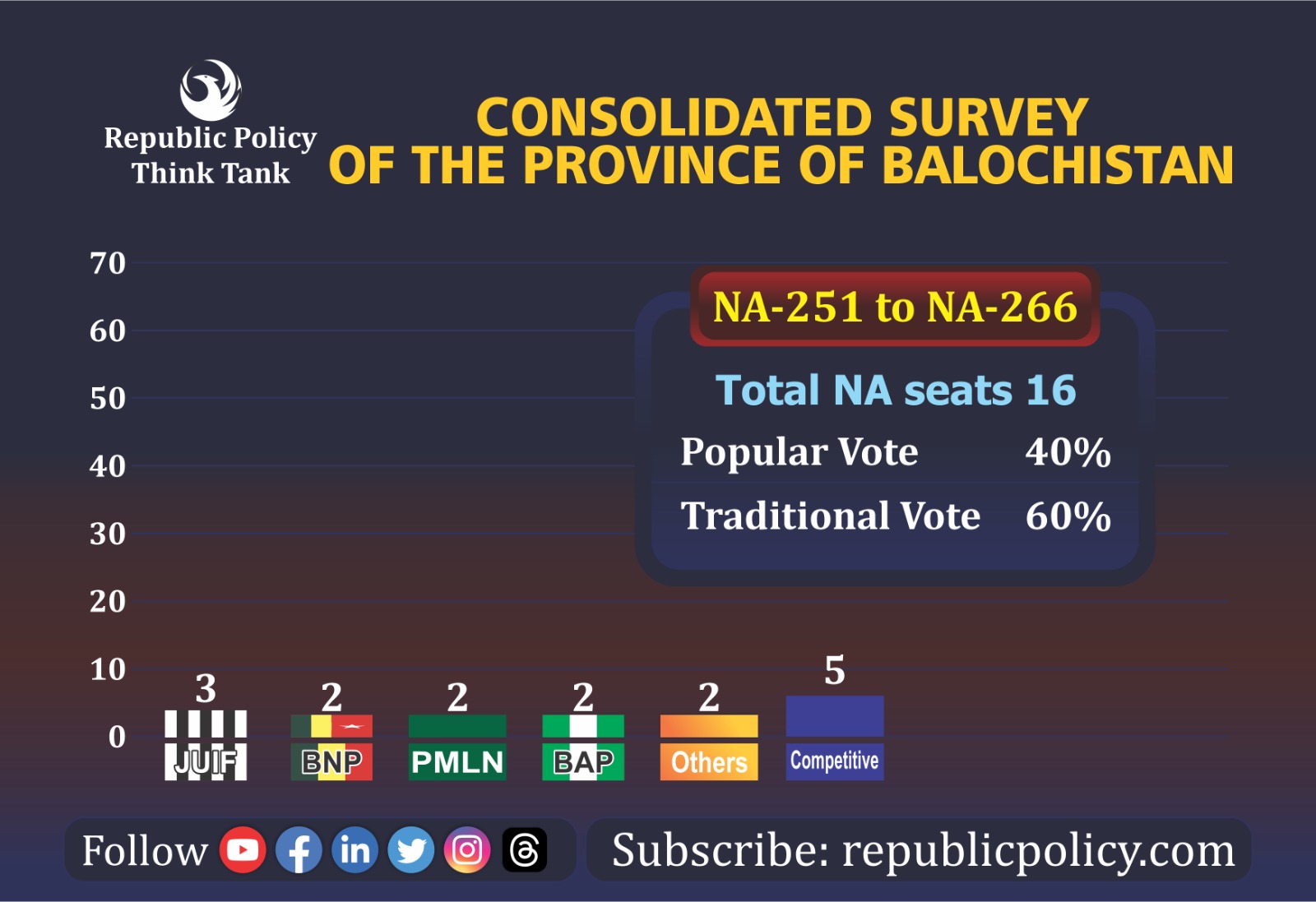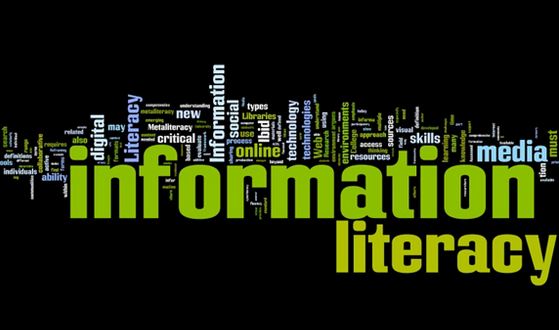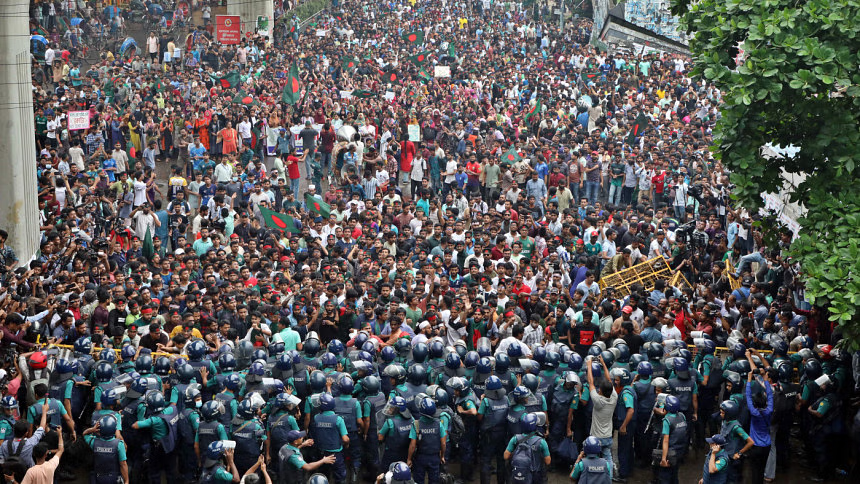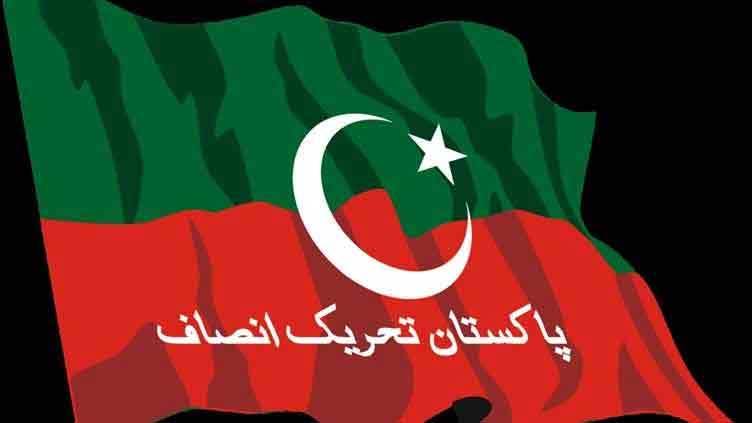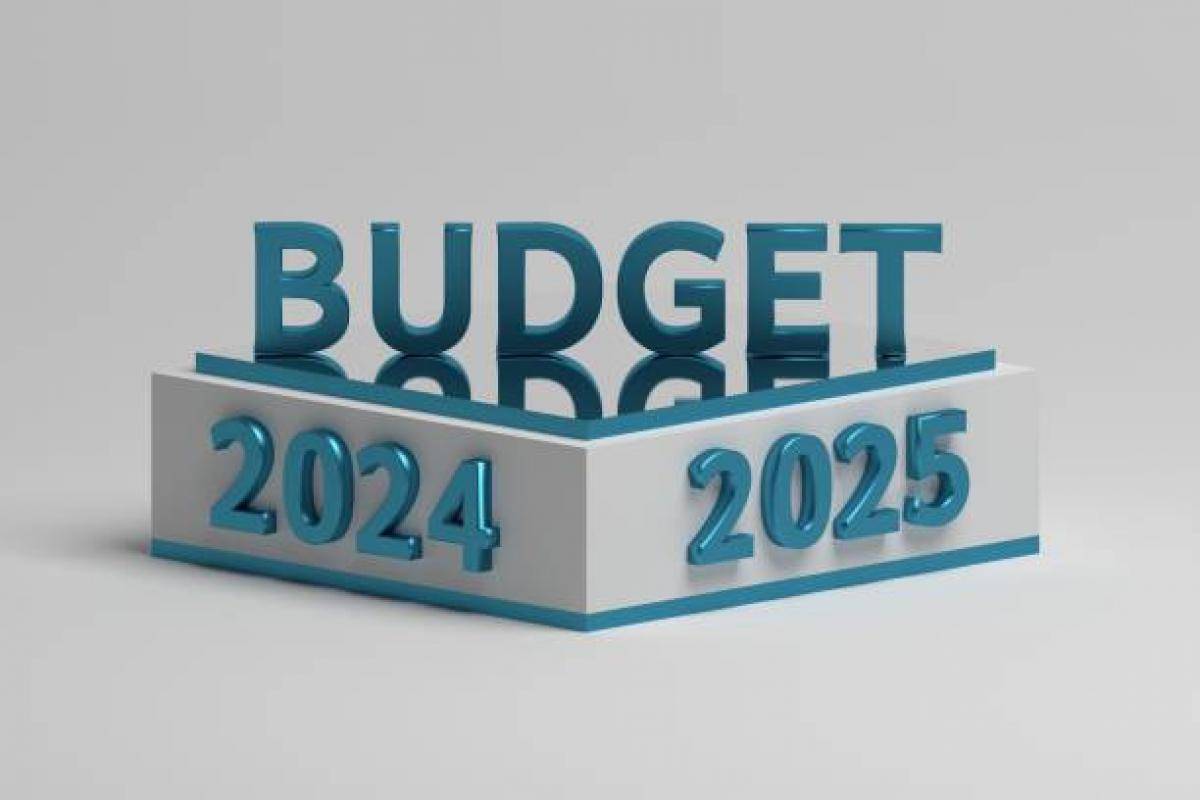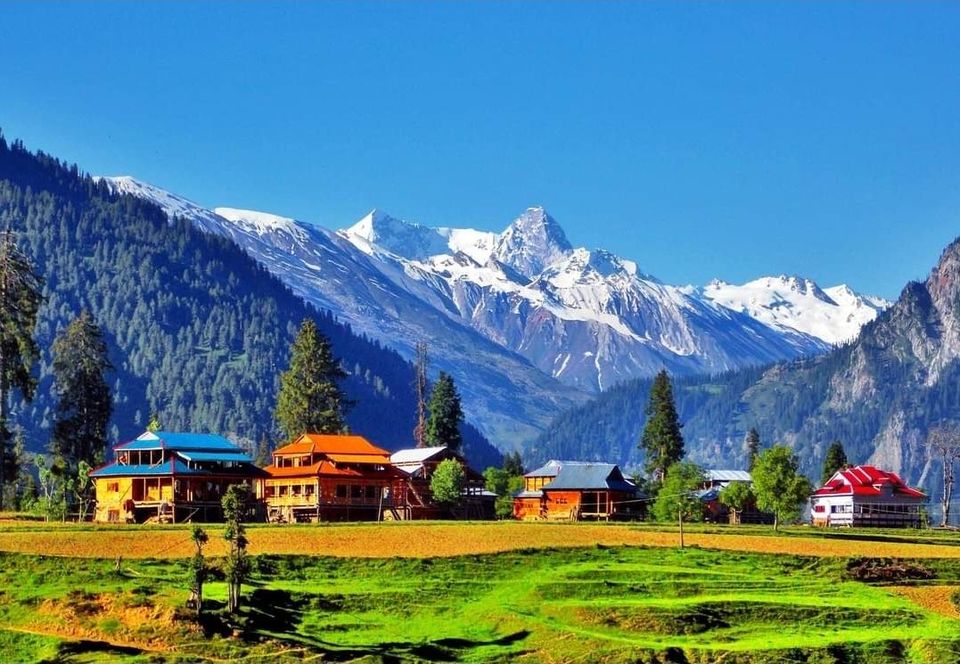Team Republic policy
The political landscape of Balochistan is woven with diverse threads of ethnic, traditional and national aspirations. Understanding these complexities is very important to move forward with the upcoming National Assembly elections in the province. The political landscape of Balochistan is a complex maze woven from diverse threads of race, tradition and public sentiment. The province is divided into three regions: the Pashtun Belt, the Baloch Belt, and the multi-ethnic capital Quetta. Each region has a distinct political environment shaped by unique cultural and linguistic identities.
The Pashtun belt is a confluence of religious, ethnic and national sentiments. Parties like the JUIF cater to the needs of the religious community, while the ANP and PKMAP represent ethnic aspirations. However, PTI’s national appeal also finds resonance here.
The multi-ethnic and multi-lingual capital of Quetta sees parties like BNP, HDP, JUIF and even PTI competing for votes. Appeals are based on political leanings.
Traditionally, the Baloch belt is ruled by Sardars. Although their influence is waning, they still hold some power. In areas where Sardars are less powerful, national and federal parties like the PTI are struggling to gain traction.
Unlike other provinces, where the popular vote dominates, Balochistan is witnessing a unique ratio. Balochistan has 40% popular vote while traditional vote is 60%. This means that the personal influence of political figures, often linked to tribal affiliations or family inheritance, plays an important role in influencing voters.
Ethnicity and language are intimately connected with political choices in Balochistan. Parties often associate themselves with specific ethnic groups, expressing their cultural and linguistic identity. This creates a complex dynamic where national parties like the PTI face challenges in connecting with certain communities.
Specific belts, distinct dynamics
The province can be broadly divided into three main regions: the Pashtun belt, the Baloch belt, and the multi-ethnic capital Quetta. Each region presents unique political dynamics:
Pashtun Belt: This region is a confluence of religious, ethnic and national sentiments. Parties like JUIF (religious), ANP and PKMAP (ethnic), and even PTI (national) are popular here.
Quetta: This diverse city sees support for BNP (Baloch nationalist), HDP (Hazara), JUIF (religious) and PTI (national).
Baloch Belt: Here, the influence of chieftains, traditional political figures, is strong in some areas. However, there are also places where they have less influence, and a weaker connection to national politics.
Tradition vs Popularity
The interplay between tradition and popular vote further complicates the picture. Unlike other provinces, where popular votes may prevail, Balochistan faces a 60/40 split, with traditional loyalties weighing heavily. This means that the personal influence of political figures can influence party affiliation, which can make predictions even more difficult.
Ethnic and linguistic influence
Ethnicity and language play an important role in shaping political choices. The Pashtun belt, with its distinct ethnic identity, favors parties catering to its specific concerns. Similarly, the Baloch belt witnesses a complex interplay between various Baloch factions and their political aspirations. Quetta’s multi-ethnic composition leads to different political leanings.
The element of national aspiration
Despite the strong presence of regional and ethnic identities, national narratives also matter. The PTI, with its focus on national issues and development, has become popular across the province. However, its success will depend on balancing this national message with addressing local concerns and navigating complex regional dynamics.
Unexpected battlefield
Predicting the outcome in Balochistan is a difficult task. The interplay of tradition, ethnic and national aspirations, the influence of chieftains and the 60/40 vote split, creates a dynamic and unpredictable scenario. Keeping abreast of local developments, understanding the nuances of each region, and following the strategies of key candidates will be crucial to understanding the outcome of the upcoming election in this exciting province.
Don’t forget to Subscribe our Youtube Channel & Press Bell Icon.
Who will win how many National Assembly seats in Balochistan?
The upcoming National Assembly elections in Balochistan promise to be an interesting yet complex affair. Unlike other provinces, where popular vote reigns supreme, tradition has a powerful influence in Balochistan, shaping the political landscape in a unique way.
Division of Provinces with reference to Elections
Balochistan’s 16 National Assembly seats cover two to three districts each, creating a diverse political field. Unlike its homogenous counterparts, the province is divided into distinct regions with their own political leanings.
Tradition over popularity
A clear feature of the political landscape of Balochistan is the dominance of the traditional vote over the popular vote. Political figures with strong local ties and tribal affiliations have significant influence, with the traditional vote at 60 percent and the popular vote at 40 percent. Understanding this dynamic is crucial to predicting poll results.
Claimants and their strongholds
Many parties develop their domains within this unique scenario:
Jamiat Ulema-e-Islam (F): Strong on 3 seats, JUIF capitalized on its religious appeal and established networks in specific areas.
Balochistan National Party (BNP): Representing Baloch nationalist aspirations has a strong presence in 2 seats.
Pakistan Muslim League (N) (PMLN): Consisting of 2 seats, the PMLN leverages its traditional support base in certain areas through elected representatives.
Balochistan Awami Party (BAP): Can win 2 seats by leveraging its unity and influence among certain demographics.
Pakistan Tehreek-e-Insaf (PTI) and Pakistan People’s Party (PPP): Navigating the complex political landscape with national reach in the Pashtun belt, each has 1 seat.
Battleground for remaining seats
The remaining 5 seats offer a breathtaking view. These contested seats see a mix of smaller parties, independents, and even contenders. In these districts, local issues, personal connections, and broad alliances become paramount, making predictions difficult.
Factors other than party
While parties play a role, it’s important to understand the nuances of each area. Tribal affiliations, local leaders, and historical ties to specific groups can significantly influence voters.
The upcoming elections in Balochistan promise a dynamic contest. While it is important to understand the importance of the traditional vote and party strongholds, a close eye on local dynamics and potential alliances will be key to understanding the final results. The political landscape of Balochistan looks forward, unfolding a unique story of tradition, identity and the struggle for electoral power. Hence, the upcoming elections in Balochistan promise a thrilling contest, with various parties trying to dominate the 16 National Assembly seats. Understanding the unique dynamics of the popular vote, traditional influence and party loyalties in different districts will be critical to predicting outcomes. To get a clear picture of this multifaceted political landscape, it will be important to be aware of ground developments, possible alliances and local issues.



































